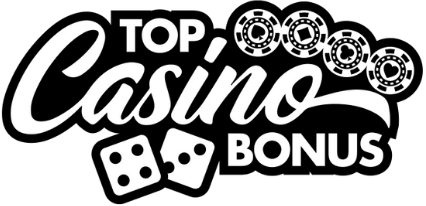Keno explained: how to play this lottery-style game
Any seasoned punter who’s spent quality time around lottery terminals or digital betting platforms has brushed shoulders with Keno, whether you knew it or not. To the untrained eye, it might look like glorified bingo or a simplified version of roulette. But let me tell you, there’s more under this hood than most folks realize. When properly understood, Keno is a nuanced numbers game that blends luck, control, and structure in a way few lottery-style games manage.
Table of contents
How keno really works
Most people fumble their Keno tickets believing it’s a pure game of chance, like flipping coins in a windstorm. Sure, it’s a game of luck, but knowing the structure shifts the odds from wild guessing to strategic guesstimating. The core mechanics? Players select numbers, usually between 1 and 80, and then wait for 20 numbers to be drawn at random.
The basics in numbers
In standard Keno, you’re typically allowed to pick between 1 and 20 numbers. The more numbers you choose, and the more that match the drawn ones, the higher your payout climbs. But here’s a nugget most rookies overlook: playing all 20 doesn’t increase your odds meaningfully. It just drags your bankroll through the mud quicker unless you’re striking gold regularly.
There’s a sweet spot for choosing numbers. In my experience, 6 to 9 is the golden range. It balances risk and reward in a way that mirrors the more structured odds you’d find in classic strategy games like roulette or sic bo. You’ve got enough range to hit and enough margin to breathe.
Misconceptions that muddy the waters
Every few years, I hear people chatter about ‘hot numbers’ or ‘cold zones’ on the Keno grid, like they’re playing a hyper-advanced version of darts. Don’t fall for it. Unlike the mechanical dependencies of ball-bearing roulette wheels or dice-physics in Sic Bo, Keno numbers are (or should be) randomly computer-generated. No machine memory. No wheel bias. Pure RNG.
The myth of streaks and patterns
I’ve seen players try to build databases of previous draws, hunting trends like Wall Street day traders. But here’s the rub: each Keno draw is independent. Looking for trends is like chasing smoke. If you’re spending more time analyzing previous draws than placing calculated wagers, you’re spinning your wheels in sand. It’s critical to differentiate Keno from systems reliant on mechanical predictability.
Evaluating payout structures
The unsung hero of smart Keno play lies in reading and evaluating the paytable, just like understanding odds in baccarat variants can mean the difference between bleeding chips and grinding profit. Not all over-the-counter or online Keno games are created equal. One might pay 1000 to 1 for a 7-number hit, another only 800 to 1. That tiny difference? It eats away your expected return like termites through an old house beam.
Compare, adapt, and optimize
Experienced players always adjust based on paytable. I once walked away from an entire session because the house dropped their 6-number return from 76x to 60x. It wasn’t personal. It was math. Learn to pivot based on payout thresholds, and you might just keep your game sharp while others burn through their funds blindly.
Smart bankroll strategies
If you’re gunning for longevity, and you should be, you’ve got to treat your bankroll with the kind of reverence a craftsman reserves for fine tools. Select your numbers conservatively, wager consistently, and always know when to bail. Keno is not a sprint to the jackpot, it’s a slow simmer, like Bavarian stew. The longer it brews, the richer the taste. Sort your bets into manageable units and don’t commit full funds to any single set of numbers.
Practical bankroll ratios
Here’s the rule I followed religiously for over 20 years: never commit more than 2% of your total Keno bankroll to a single ticket. That means if you’re rolling with $500, no ticket should exceed $10. This strategy has bailed me out more times than I care to admit, especially during dry spells. Trust it. It works.
The house edge and player odds
Now, let’s address the elephant in the room: Keno’s house edge is no joke. It’s significantly higher than many other games. We’re talking 25% to as much as 30% depending on where you’re playing. For context, even a low-skill option like betting on red or black in roulette carries just around a 5.26% edge. That’s why Keno, while easy to play, shouldn’t be mistaken as an easy win.
Managing expectations accordingly
The best Keno players I’ve known were all philosophical folks. They played for the love of the rhythm, not for fantasies of overnight riches. Listen, you can snag a good win here and there, but thinking this game will pay your rent every month is the shortest path to heartbreak. That’s why it’s crucial to understand responsible gambling principles and respect the unpredictability of the game.
Choosing the right platform or venue
Whether it’s a dusty kiosk in Reno or a sleek online table in a fancy lobby UI, you’ve got to vet where you’re playing. Always check that the platform is certified, with proven randomness testing, and a transparent payout system. Don’t just trust flashy banners or bonus numbers posted on servers in who-knows-where.
Check behind the curtain
One of the easiest ways to verify legitimacy is by consulting trusted review systems. I’ve seen platforms with gimmicky graphics drawing folks in, only to burn them with god-awful payout rates and buried rules. That’s why it’s essential to understand the rating guidelines used to evaluate platforms rigorously. A good rating system considers far more than just aesthetics, it dives into mechanics, fairness, and long-term reliability.
Final thoughts: the virtue of restraint in Keno
If there’s one philosophy that’s carried me through countless Keno sessions, it’s this: master the art of stepping away. Some folks treat Keno like a vending machine, insert coin, push button, wait. But those of us who’ve been in the trenches know it’s more like fly fishing. You spot, you wait, you cast, and you respect the waters.
Keno isn’t the most complex game, nor is it the highest-paying. But when you play it with intent, observing paytables, applying sound bankroll discipline, and monitoring the platform, you’ll find it offers a pacing and depth that feels oddly meditative. Play it smart, know when enough’s enough, and treat each draw not as a conquest, but as one more round in a long and winding game.





0 Comments